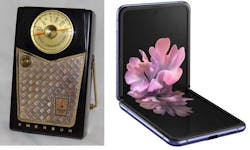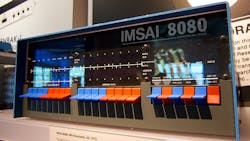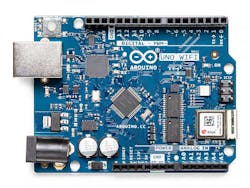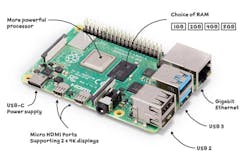Remembering Electronic Designs
This article is part of Electronic Design's 70th Anniversary series.
At 70 years, Electronic Design has been around longer than I have, although I’m close. We plan on being around for another 70. If the amount of change in just our industry is any indication of what’s coming up, then we’re in for a whirlwind ride. Even 70 years ago, electronics had changed the world, doing things that were never possible before.
Usually, my Lab Bench articles look at a new dev kit or product. This time, though, I wanted to highlight some of the online and print articles that are looking back and forward. These include:
You can always leave comments online for these articles. However, with the “What Computer Had the Biggest Impact on You?” series, you can provide additional feedback, which I’ve turned into slideshows based on your input.
The “Series: Then and Now” is a collection of articles that are appearing in each print issue of Electronic Design. These cover a very large swath on some target topic like processor technology.
Finally, there’s the Do You Recognize These? Series, where I provide a hint and a close-up image about a technology or product. I follow up with the full image and a description. Sometimes I give a little history, since most of these are items I’ve worked with.
It’s worth putting our latest technology into context. Take the transistor radio, which would have been around when Electronic Design started publication (Fig. 1). It had about half-a-dozen individual transistors. It ran off a 9-V battery. We now have smartphones that have multiple chips with transistor counts in the millions using 5-nm silicon technology. They have foldable, hi-res screens plus multiple hi-res cameras that can capture and store video internally.Think of where we would be without early chips like the NE555 timer. We’ve had many Ideas for Design articles based on this part alone.
Anyone remember the IMSAI 8080 (Fig. 2) with 8-in. floppy disks used in the movie WarGames? Its S-100 bus was used in dozens of pre-IBM PC platforms.
These days, multiple platforms currently out there are smaller and more powerful, like Arduino (Fig. 3) and Raspberry Pi (Fig. 4).
By the way, anyone remember how to solder or wire wrap?
Read more articles in Electronic Design's 70th Anniversary series.
About the Author
William G. Wong
Senior Content Director - Electronic Design and Microwaves & RF
I am Editor of Electronic Design focusing on embedded, software, and systems. As Senior Content Director, I also manage Microwaves & RF and I work with a great team of editors to provide engineers, programmers, developers and technical managers with interesting and useful articles and videos on a regular basis. Check out our free newsletters to see the latest content.
You can send press releases for new products for possible coverage on the website. I am also interested in receiving contributed articles for publishing on our website. Use our template and send to me along with a signed release form.
Check out my blog, AltEmbedded on Electronic Design, as well as his latest articles on this site that are listed below.
You can visit my social media via these links:
- AltEmbedded on Electronic Design
- Bill Wong on Facebook
- @AltEmbedded on Twitter
- Bill Wong on LinkedIn
I earned a Bachelor of Electrical Engineering at the Georgia Institute of Technology and a Masters in Computer Science from Rutgers University. I still do a bit of programming using everything from C and C++ to Rust and Ada/SPARK. I do a bit of PHP programming for Drupal websites. I have posted a few Drupal modules.
I still get a hand on software and electronic hardware. Some of this can be found on our Kit Close-Up video series. You can also see me on many of our TechXchange Talk videos. I am interested in a range of projects from robotics to artificial intelligence.





